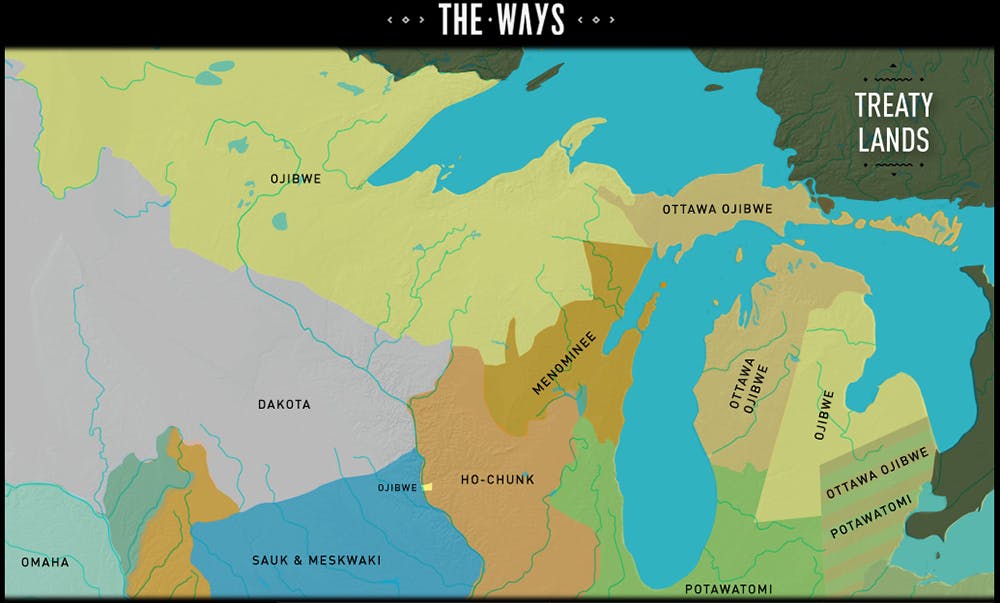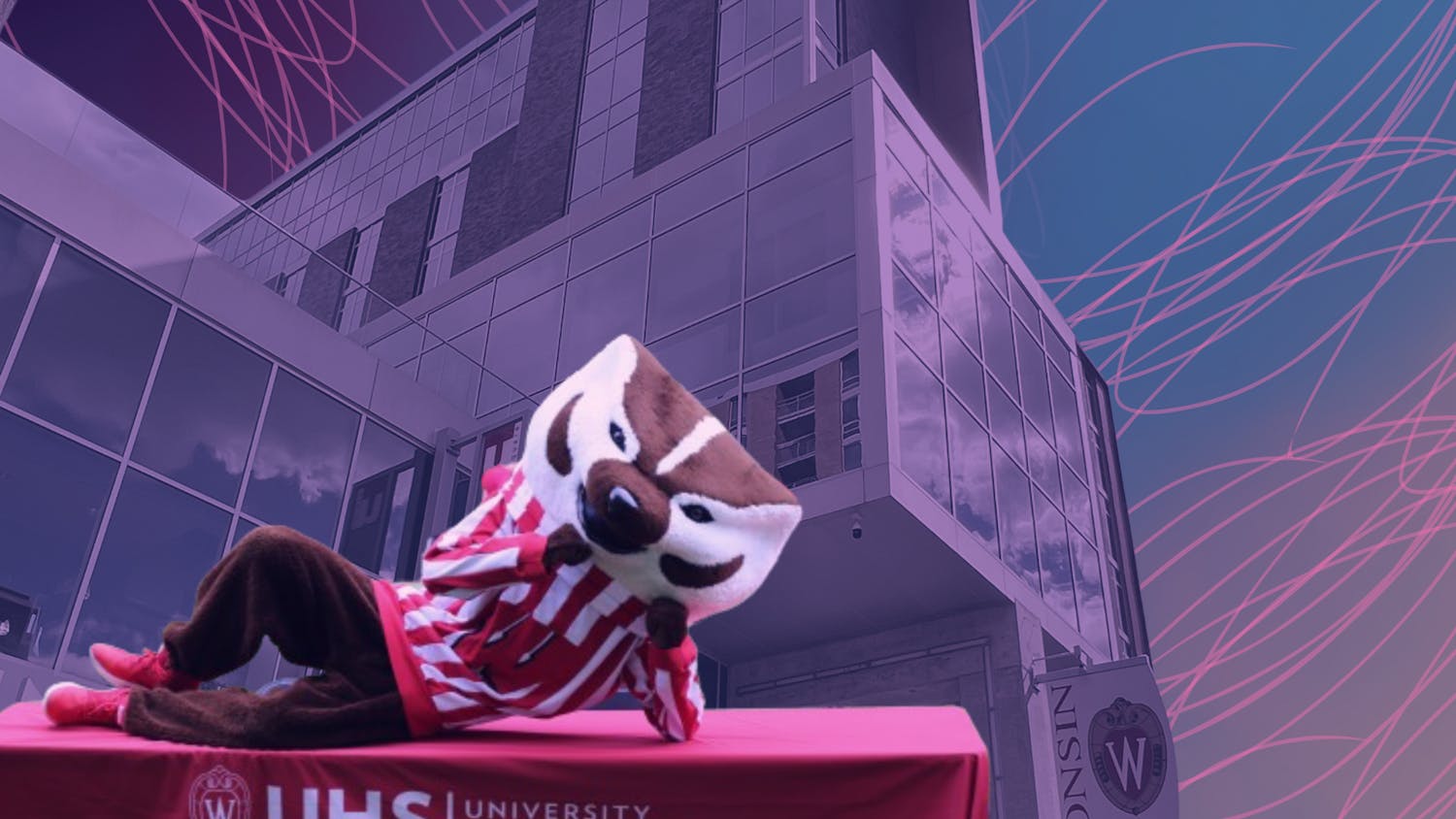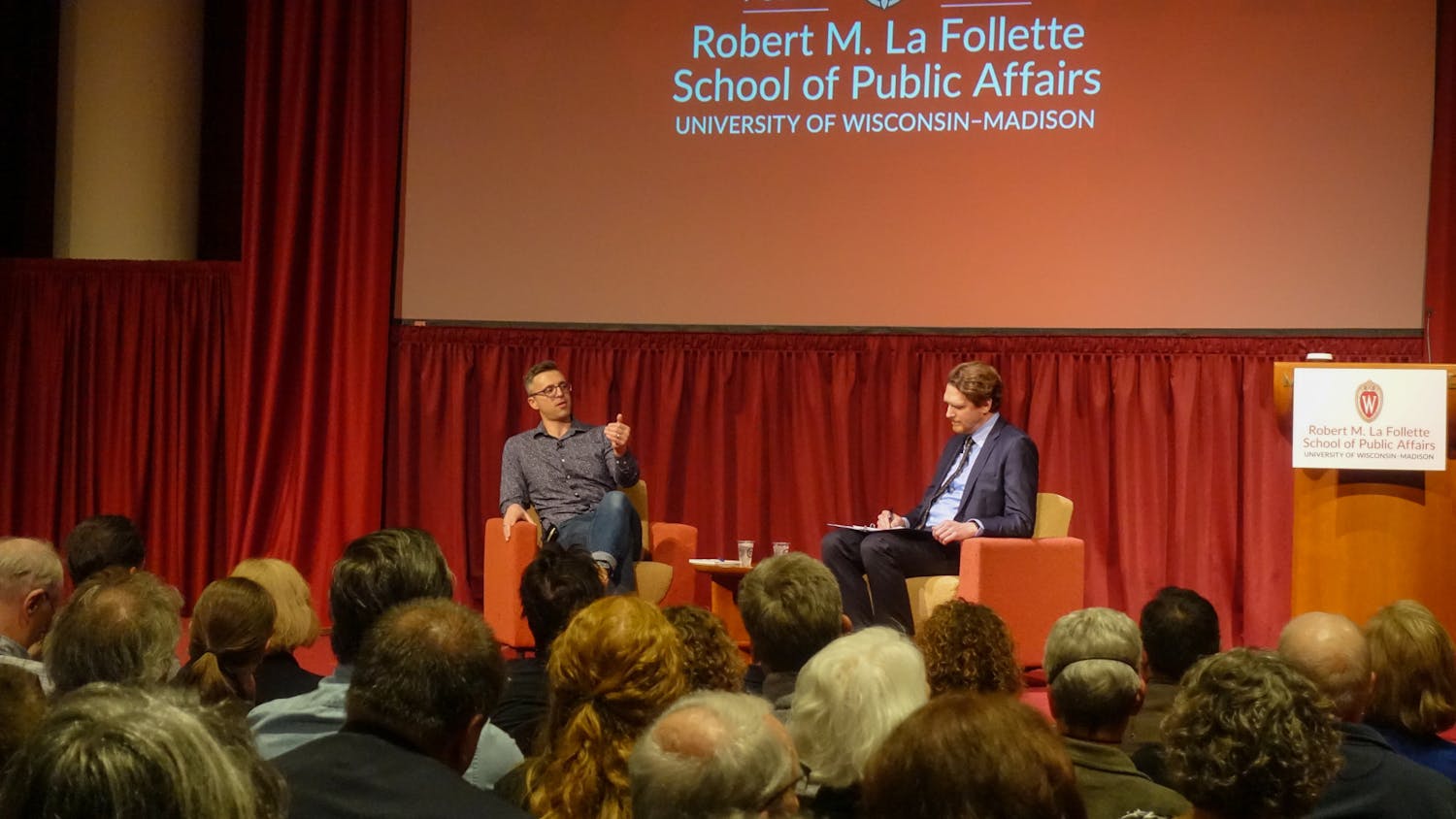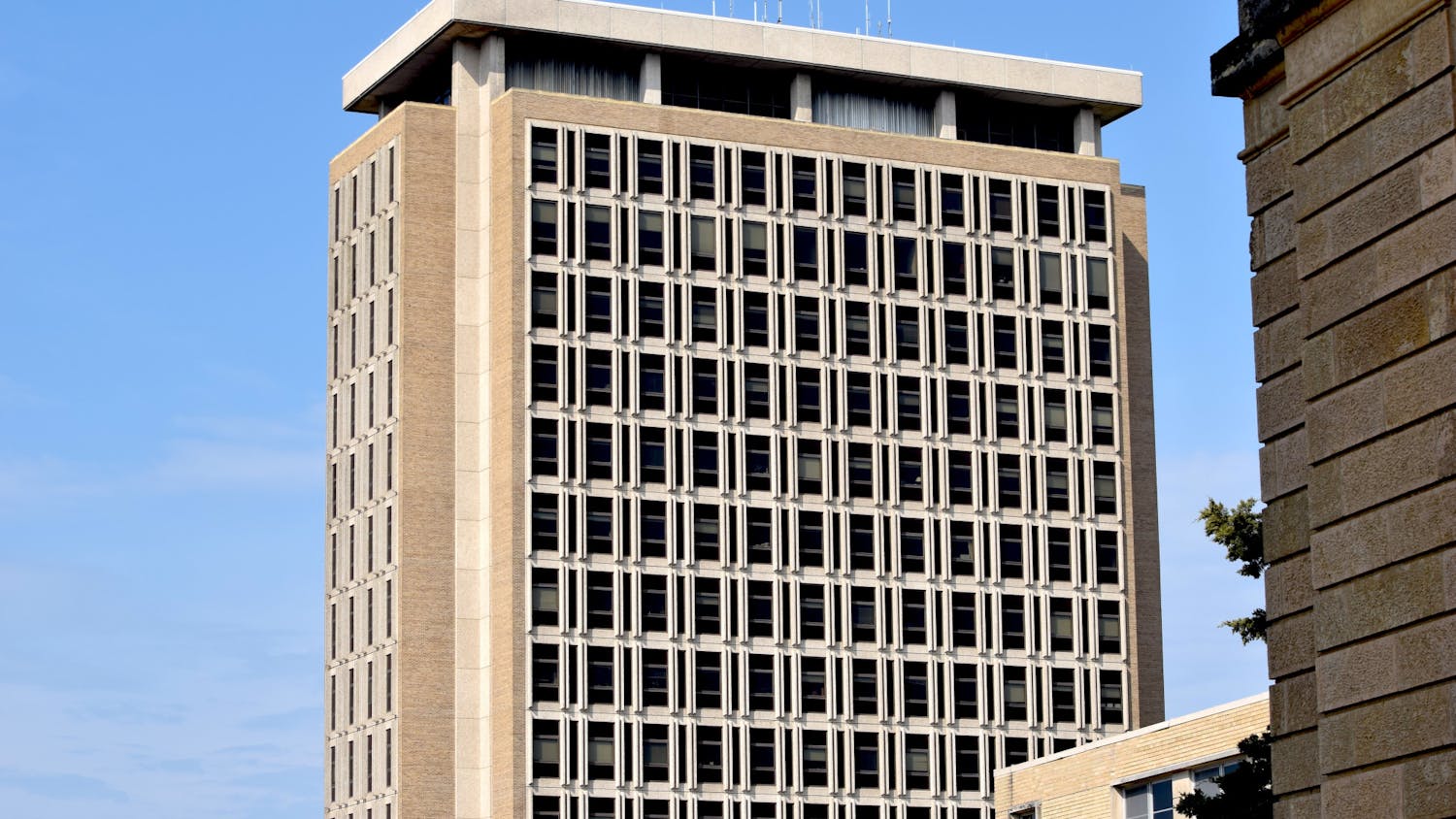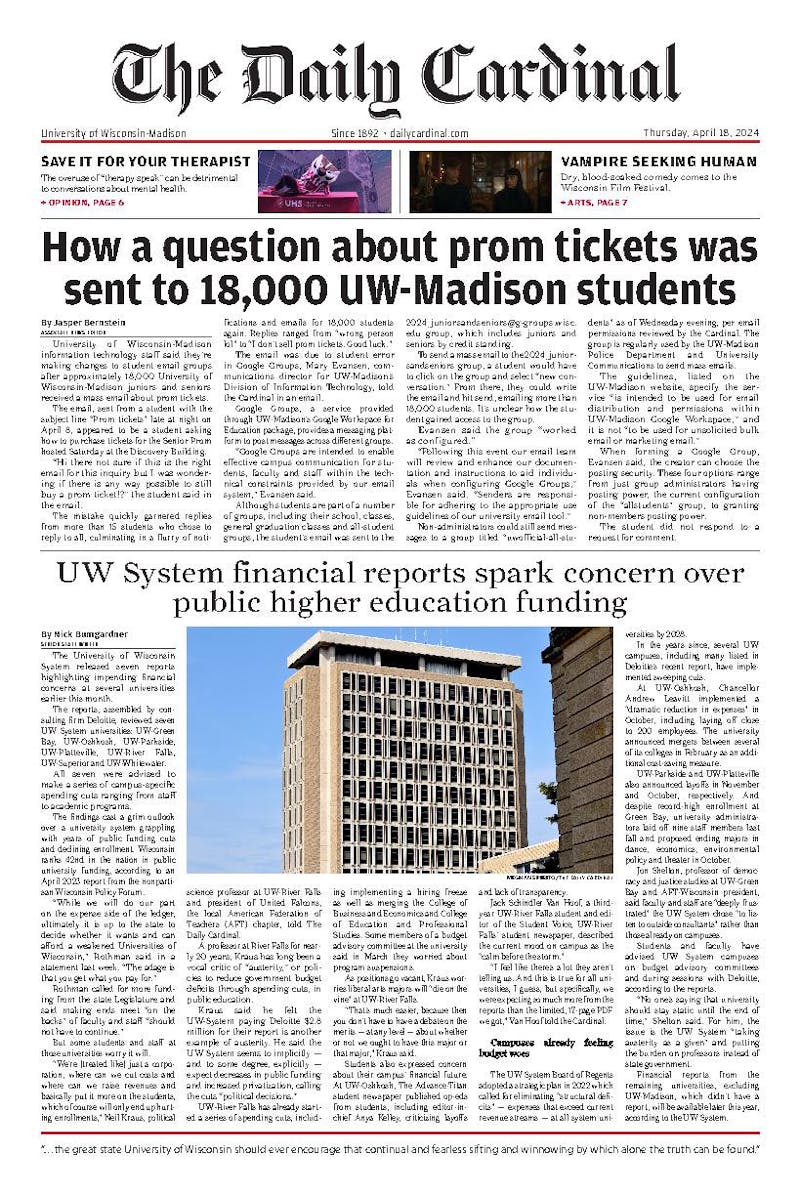A little more than a century ago, the University of Wisconsin-Madison was a completely different place than the campus we walk today. In 1840, just eight years before the founding of UW-Madison, the population of the Madison area consisted of 99 percent Ho-Chunk, and a mere one percent of non-Indian society. In a recent interview with Interim Assistant Dean and Director of the School of Education Aaron Bird Bear, conducted by UW-Madison Communications Director John Lucas, Bird Bear highlighted the transformation of the area, saying, “there has been a complete physical and social transformation of Dejope from a marshy burr oak savannah with much less forest cover.” This is compared to the hustling and bustling that we see today. If this complete physical and social transformation of our campus area has only happened in the past 170 years, why do only a small percentage of students take concern with this issue?
While UW-Madison does offer both a major and certificate program through the American Indian Studies office, students are rarely informed of the rich history our campus has with the American Indian community. The campus itself sits in the middle of the treaty-recognized borders of the former 10 million acres of land owned by the Ho-Chunk Nation. Not to mention that the Lakeshore neighborhood has Dejope Residence Hall and Four Lakes Market, which were the original names given to this region of Wisconsin by the Ho-Chunk Nation.
Madison’s rise in student activism over the past year is something that our campus should be proud of. But it seems that we are missing a large portion of Madison’s direct history. Just this past week Madison saw an incident of racial discrimination against a group of Native American women. This incident took place in the Lakeshore neighborhood, the area of campus that is richest with Native American history. These women were gathered in a healing circle, spurred by the recent statistic that showed nearly 47 percent of current Native American women at UW-Madison had reported being sexually assaulted. While engaged in a healing ritual these women were interrupted with racially insensitive calls and chants.
While steps were taken to rectify this situation, both by Campus Housing and the campus group BlackOut, the representation of the Native American culture on campus is something that needs to be addressed. More than 48,000 students attend this university, and a shockingly low number of only 300 students are American Indian and Alaska Native, which is only around .625 percent of this campus population.
Along with this staggering neglect of culture, we also forget about the campus itself. The UW-Madison campus has the honor of being home to four Indian burial mounds, the most prominent of which are located on Observatory Hill. The Wisconsin Burial Sites Preservation Law (Wisconsin Statutes 157.70) protects these burial mounds from any “defacing, mutilating, injuring, exposing, removing, destroying, or desecrating” of the sites. A fact the campus seems to neglect, due to the fact that we have two sidewalks that run directly through the effigy mounds that call Observatory Hill home.
Although these regulations are not strictly followed, Wisconsin burial mounds might not have any protection at all in the near future. A recent Wisconsin bill proposed by state Sen. Chris Kapenga, R-Delafield, and state Rep. Rob Brooks, R-Saukville, calls for the lifting of protections given to some historical burial mounds. With Wisconsin hosting the greatest diversity of American Indian nations out of any state east of the Mississippi, we already don’t focus enough on these issues, and shouldn’t be moving to eliminate what few protections we do have of their history.
Campus is taking steps forward, even recently educating the Campus and Visitor Relations Office, which is in charge of campus tours and information, on the campus heritage surrounding the American Indian culture. But that still isn’t enough. Instead of allowing students to continue to hold such ignorance toward campus history, we need to educate them. The American Indian Studies Office offers tours focused on Native American influence on campus, a resource that is rarely taken advantage of. If campus highlights these services, and students were to step up and use them towards their education, Madison’s student population could become both more well-rounded and culturally educated.
Cal is a sophomore majoring in political science and communication arts. Let us know what you think at opinion@dailycardinal.com.

